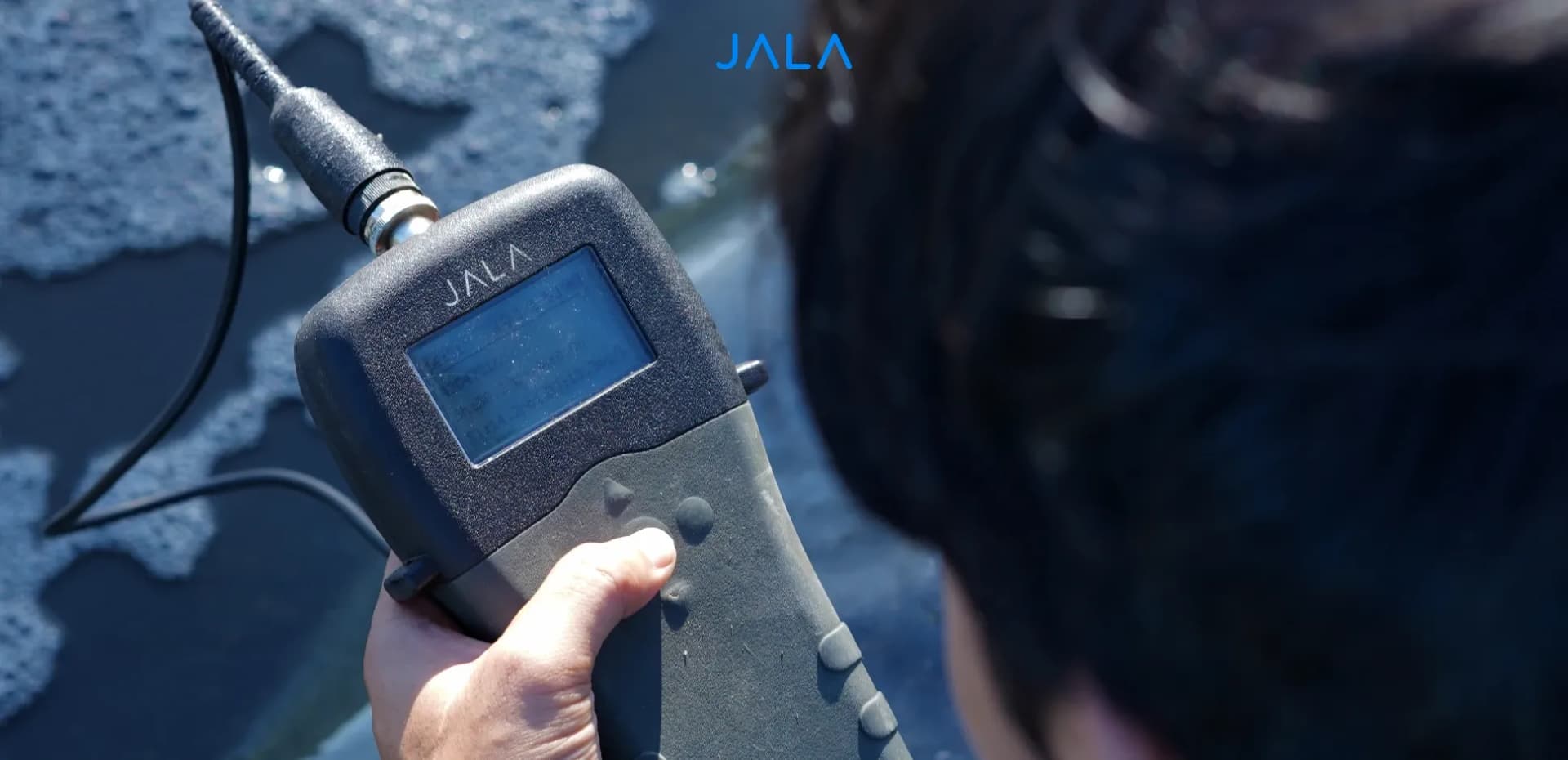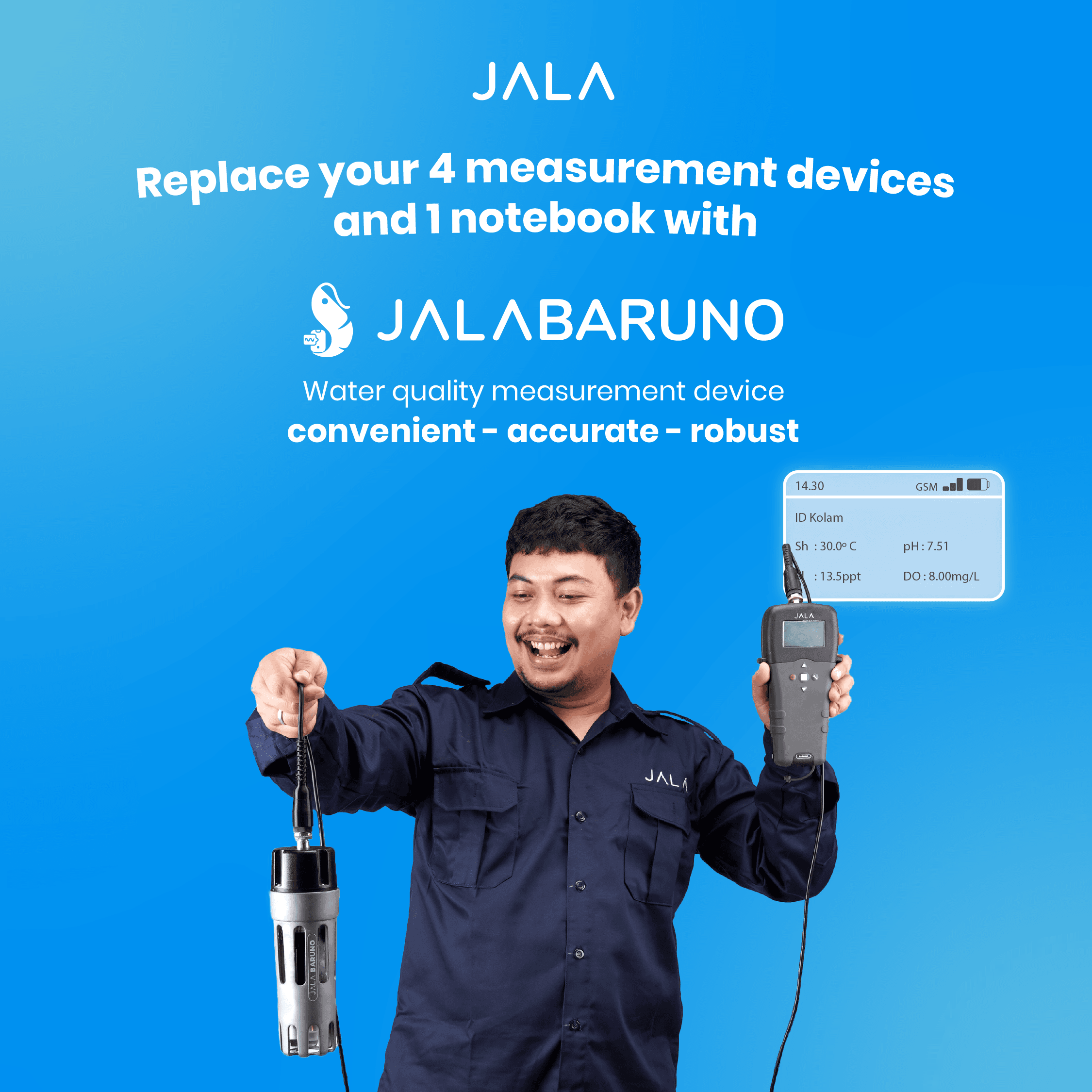
It is necessary for farmers to know how to maintain the water quality of vannamei shrimp ponds. Since shrimp live and grow in water, it is one of the most crucial components in shrimp farming.
By maintaining the quality of shrimp pond water, shrimp can grow healthily, minimizing the risk of catching diseases. High quality water will lessen the negative impact that ponds pose to the environment and increase cultivation productivity.
With that being said, how to maintain the water quality of vannamei shrimp ponds properly? What are the parameters that must be measured? Read further in this article.
How to Maintain the Water Quality of Vannamei Shrimp Ponds?
High quality water for vannamei shrimp is well-maintained water which is ideal to support shrimp growth. Here are the steps to maintain the water quality of vannamei shrimp ponds:
1. Changing the water regularly
This practice is conducted to discard poor-quality water and replace it with new, higher quality water. Changes in water quality depend on cultivation period, stocking density, shrimp biomass, water turbidity, and water quality in the reservoir.
The recommended method in this process is adding new water first then homogenizing it with paddle wheels. After that, discard the water in the bottom of the pond as well as foam that traps dirt.
Before adding water to the pond, measure the pH, dissolved oxygen (DO), salinity, and temperature of the water to ensure the new water has high quality. The volume of replacement water should be 10%. If the ammonia concentration is high, the replacement water volume should be 25-50% of the total water volume in the pond.
2. Siphoning
Feed residue, plankton remains, and the output of shrimp metabolism can accumulate into sludge. If it is out of control, sludge may raise ammonia levels to the point of forming harmful hydrogen sulfide. The accumulation of this sludge may cause the emergence of vibrio bacteria.
You are strongly advised to siphon the bottom of the pond to remove sludge and maintain water quality. Siphon is the process of drawing off the sludge at the bottom of a pond using a hose directed to the drain. It functions similarly to a vacuum cleaner.
However, it is best not to draw off the whole sludge, but to leave it a little because it can be a bioreactor that contributes to the nutrient cycle in the pond. Sludge that is drawn off completely has the risk of causing excessive fluctuations in ammonia, nitrate, and nitrite levels.
3. Applying probiotics
Probiotics are important in shrimp ponds because they can suppress the growth of pathogenic bacteria while increasing the growth of beneficial bacteria in the pond. Indirectly, the way probiotics work in the pond can help maintain water quality, particularly on chemical parameters of the water.
However, before applying probiotics, it is important to understand the composition of the probiotics that will be used. Probiotics containing Nitrosomonas and Nitrobacter are used to break down nitrites, while those containing Lactobacillus and Bacillus are used to suppress the population of vibrio bacteria.
4. Using reservoirs
Reservoirs in shrimp farms are crucial to the process of supplying and sterilizing water for cultivation during the preparation stage. This component serves to settle water before it is added to the cultivation pond and to anticipate the early signs of shrimp disease.
Reservoirs are necessary not only in the preparation stage but also in the middle of the cultivation cycle. It is essential to the process of replacing or adding water. For more optimal results, the reservoir can be filled with biofilters in the form of aquatic plants to improve water quality and prevent disease in a natural way.
5. Monitoring the water quality of shrimp ponds
One equally important way is to monitor the water quality of shrimp ponds regularly. Water quality is assessed based on its physical, chemical, and biological parameters.
With monitoring, you can discover the condition of the water from day to day and anticipate the emergence of serious problems such as shrimp disease. Regular monitoring may also increase the potential of a successful cultivation.
Monitoring is done by measuring water quality parameters and recording them. From the measurement data that have been collected, you can evaluate water quality during a certain period of time and decide the improvement measures.
What Pond Water Quality Parameters Need to be Measured?
After understanding how to maintain the water quality of vannamei shrimp ponds, you need to know what parameters need to be maintained through regular monitoring of the water quality. There are five (5) crucial water quality parameters that need to be measured in ponds, namely
1. pH
pH is one of the water quality parameters for shrimp farming and it should be maintained at 7.5-8.5. pH stability needs to be maintained because excessive fluctuations in pH may affect shrimp metabolism and physiological condition. One way to maintain pH level is to maintain alkalinity or the buffer of pH stability.
Since it is a chemical parameter, pH also affects the chemical reactions in pond water as well as the toxicity of ammonia and hydrogen sulfide. It is best to measure pH every day to learn whether its conditions are already ideal and to mitigate fluctuations.
2. Salinity
The salinity or ‘saltiness’ level of water that is good for vannamei shrimp is around 15-30 ppt. Even though vannamei shrimp can adapt to gradually decreasing salinity, they may still get stressed if the salinity drops by more than 5 ppt.
Since shrimp are prone to stress due to excessive salinity fluctuations, it is best to measure salinity regularly. The measurement data will show changes in salinity from day to day, allowing you to determine the right treatment.
3. Temperature
Water temperature affects many aspects of cultivation, such as shrimp growth, immunity, appetite, survival rate, oxygen consumption, and molting cycle. The ideal water temperature for vannamei shrimp is 26-32oC.
Temperature that drops or rises drastically has a risk of causing shrimp death. This parameter is influenced by external factors such as farm location and the weather. Since you cannot control the weather, the absolute least you can do is check the water temperature every day.
4. DO
Oxygen is essential for organisms’ respiration and metabolic reactions in shrimp ponds. The oxygen in water is in the form of DO and its ideal concentration is not less than 4 ppm.
DO concentrations can be influenced by air-water oxygen transfer, oxygen consumption by sediments, shrimp respiration, as well as plankton photosynthesis and respiration. With these variables, farmers need to maintain DO stability by measuring it every day.
5. ORP
Redox potential or oxidation reduction potential (ORP) is the measurement result of the potential in an oxidizing or reducing solution. The measured flow of electrons is an oxidation-reduction reaction and the process of this electron transfer results in detectable current called ORP. The recommended ORP value for shrimp ponds is 200-250 mV.
ORP can serve as a sign of declining water quality as well as to change the water, set the aerator, and apply probiotics. Aeration conditions in ponds can be figured out by measuring ORP.
Maintain the Water Quality of Your Pond with JALA Baruno!
 It is essential to maintain the water quality of vannamei shrimp. Here’s how to maintain the water quality of vannamei shrimp ponds:
It is essential to maintain the water quality of vannamei shrimp. Here’s how to maintain the water quality of vannamei shrimp ponds:
- Changing the water regularly
- Siphoning
- Applying probiotics
- Using reservoirs
- Monitoring the water quality of shrimp ponds
Meanwhile, the following are the shrimp pond water quality parameters that need to be measured:
- pH
- Salinity
- Temperature
- Dissolved oxygen (DO)
- ORP
To help you measure these five water quality parameters at once, JALA is #HeretoHelp with JALA Baruno. The name Baruno is inspired by Baruna or Varuna who rules over seas and oceans, watches over the waters and maintains nature’s course.
Inspired by Baruna’s role, we hope that JALA Baruno can become a facility and helper in monitoring shrimp pond water quality in order for the cultivation to run productively and sustainably. Start using JALA Baruno to maintain the water quality of your shrimp ponds!
References
7 Pond Water Data to Monitor in Vannamei Shrimp Farming
Budidaya Udang = Budidaya Air | JALA
Memahami Pentingnya Tandon | JALA





